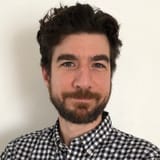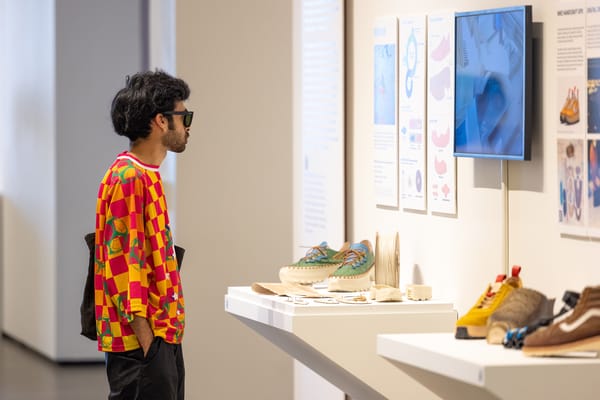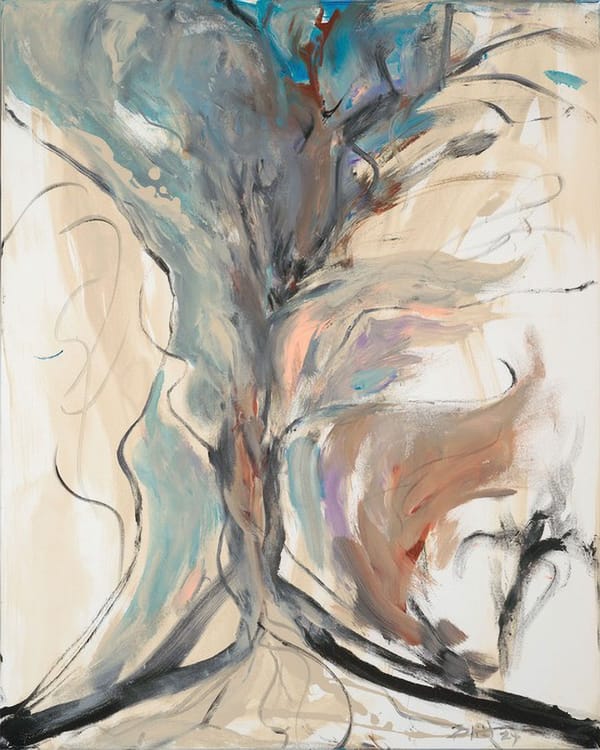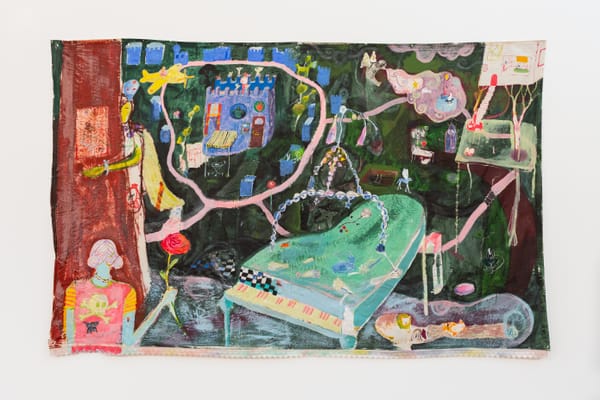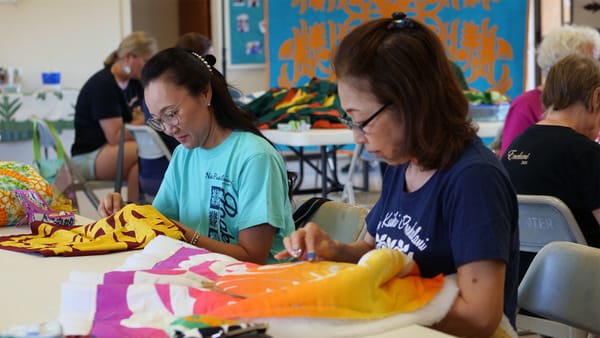10 Shows to See in Los Angeles in November
This month: Hélio Oiticica, Rick Castro, Rosemary Mayer, the Virgen de Guadalupe photographed across the city, and more.
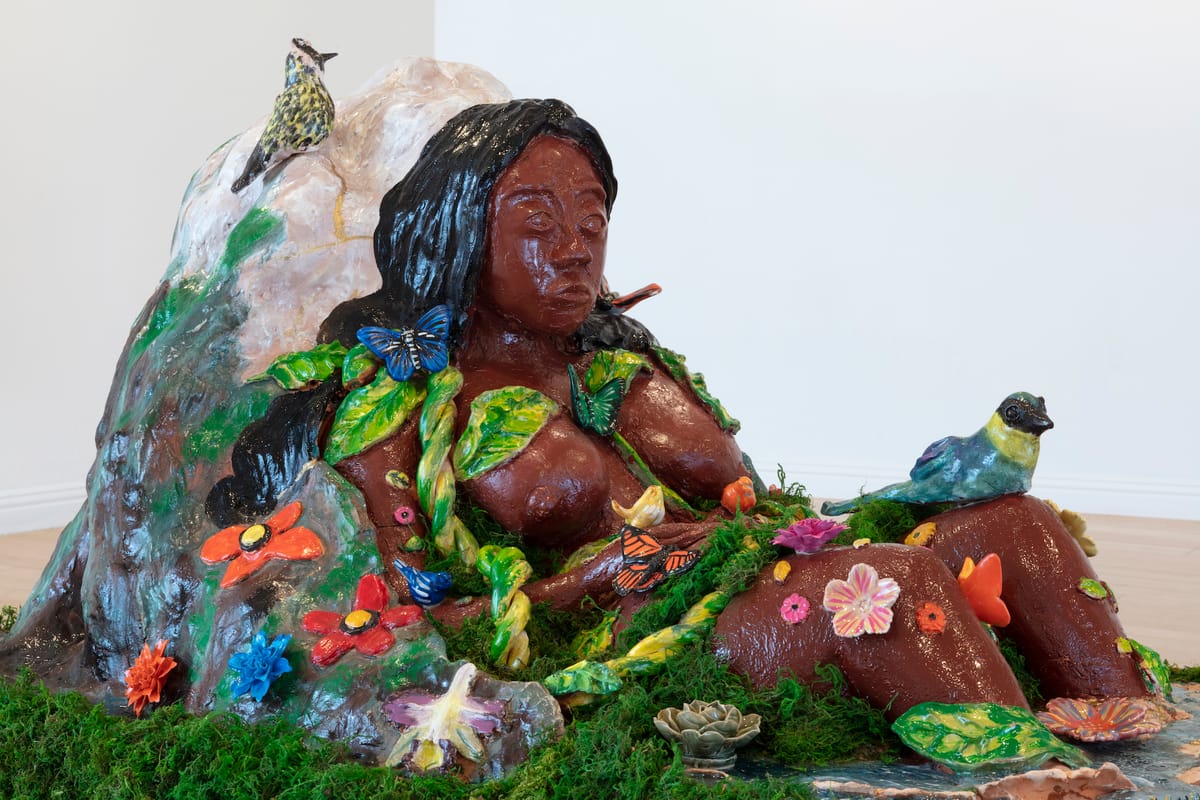
This month in Los Angeles, several shows take on loss and remembrance, fitting themes in light of Día de Los Muertos this week, which honors and reaffirms a connection to those no longer with us. Rick Castro's photos at Hollywood Forever Cemetery act as memorials to those interred there, while Carolyn Castaño's vibrant mixed-media paintings decry rampant environmental exploitation in Colombia and Judy Baca continues her memorialization of untold LA stories in "The Great Wall." Nydya Mora's photographic archive of depictions of the Virgen de Guadalupe across the city documents the icon's longstanding spiritual and cultural resonances. There's much more, including exhibitions honoring late artists Norman Zammitt, Rosemary Mayer, and Hélio Oiticica, illustrating the vitality and relevance of their work today.

Rick Castro Forever: Photographic Retrospective of Life & Death
Rick Castro's dramatic black-and-white photographs span Hollywood glamour, high fashion, and the fetish scenes of LA's queer underground. The beloved Hollywood Forever Cemetery brings together 87 of his photographs taken between 1986 and 2022 in Rick Castro Forever. Installed in the columbarium, the images take on an elegiac quality, depicting those buried nearby, such as trans icons The Goddess Bunny and Holly Woodlawn, as well as Castro's own family members. In conjunction with the exhibition, Hollywood Forever has organized a series of programs this month to commemorate events including Día de Los Muertos, the birthday of goth rock pioneer and Columbarium resident Rozz Williams, the anniversary of Oscar Wilde's death, and the death day of Castro's cat, Pywackett.
Hollywood Forever Cemetery (hollywoodforever.com)
6ooo Santa Monica Boulevard, Hollywood, Los Angeles
Through November 30 (by appointment)
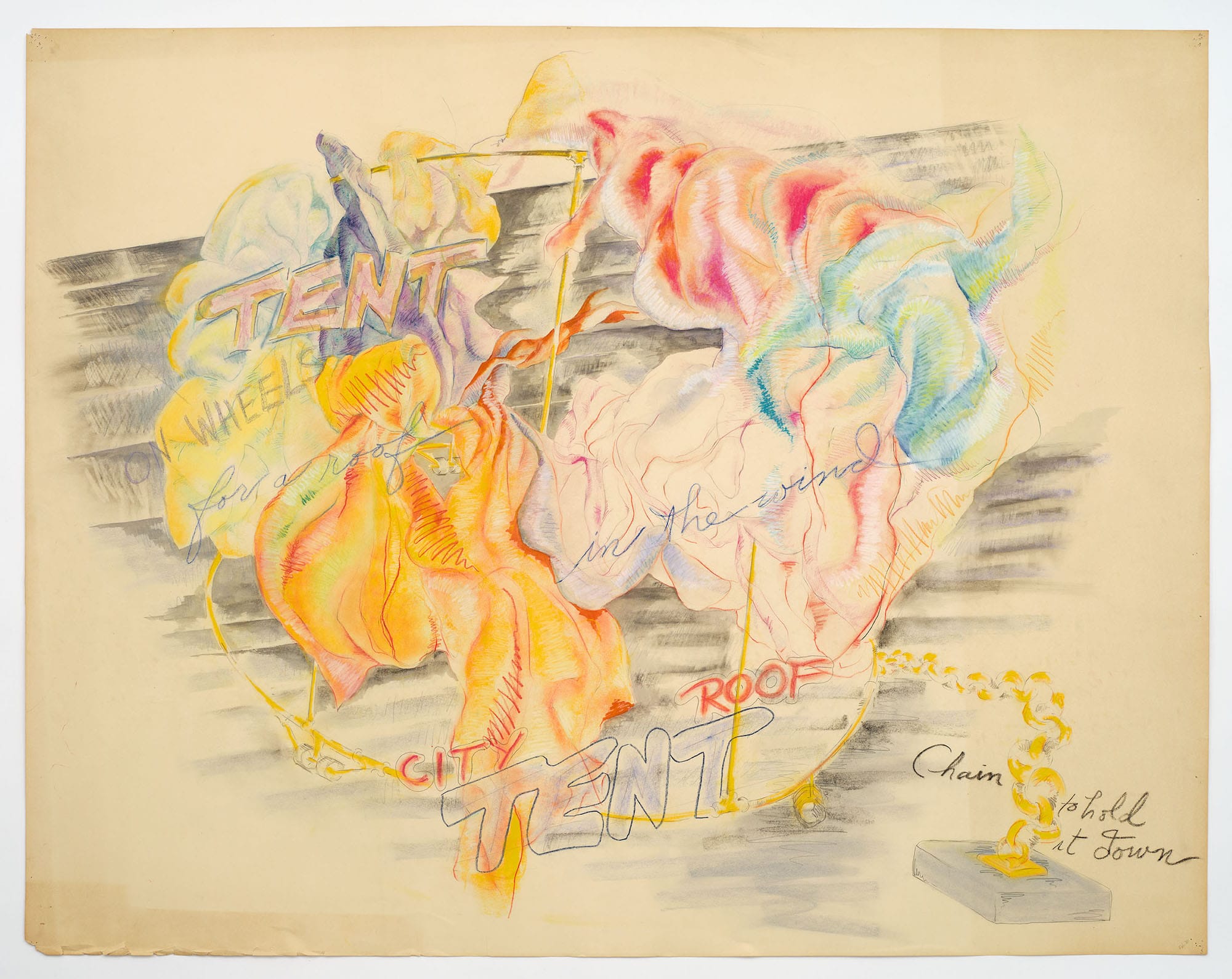
Rosemary Mayer: Noon Has No Shadows
This is a two-venue exhibition of the work of the late artist Rosemary Mayer (1943–2014), who was an influential figure in the feminist and conceptual art movements. Marc Selwyn Fine Art will focus on her work from the late 1970s and early 1980s, including proposals for unbuilt tents on urban roofs and sculptures based on ancient Greek vessels. Concurrently, Hannah Hoffman Gallery will present work created between 1971 and 1993, encompassing Mayer's sculptural investigations with unconventional materials such as rabbit-skin glue, fiberglass, and cheesecloth that explore fragility, ephemerality, and the body. A new performance utilizing weather balloons inspired by Mayer's Temporary Monuments series will be created by the artist's estate with participating artists and take place at the Wallis Annenberg Center for the Performing Arts in Beverly Hills between 1pm and 4pm on Saturday, November 11.
Hannah Hoffman Gallery (hannahhoffman.la)
2504 West 7th Street, Westlake, Los Angeles
November 12–December 23
Marc Selwyn Fine Art (marcselwynfineart.com)
9953 South Santa Monica Boulevard, Beverly Hills, California
November 12–December 23
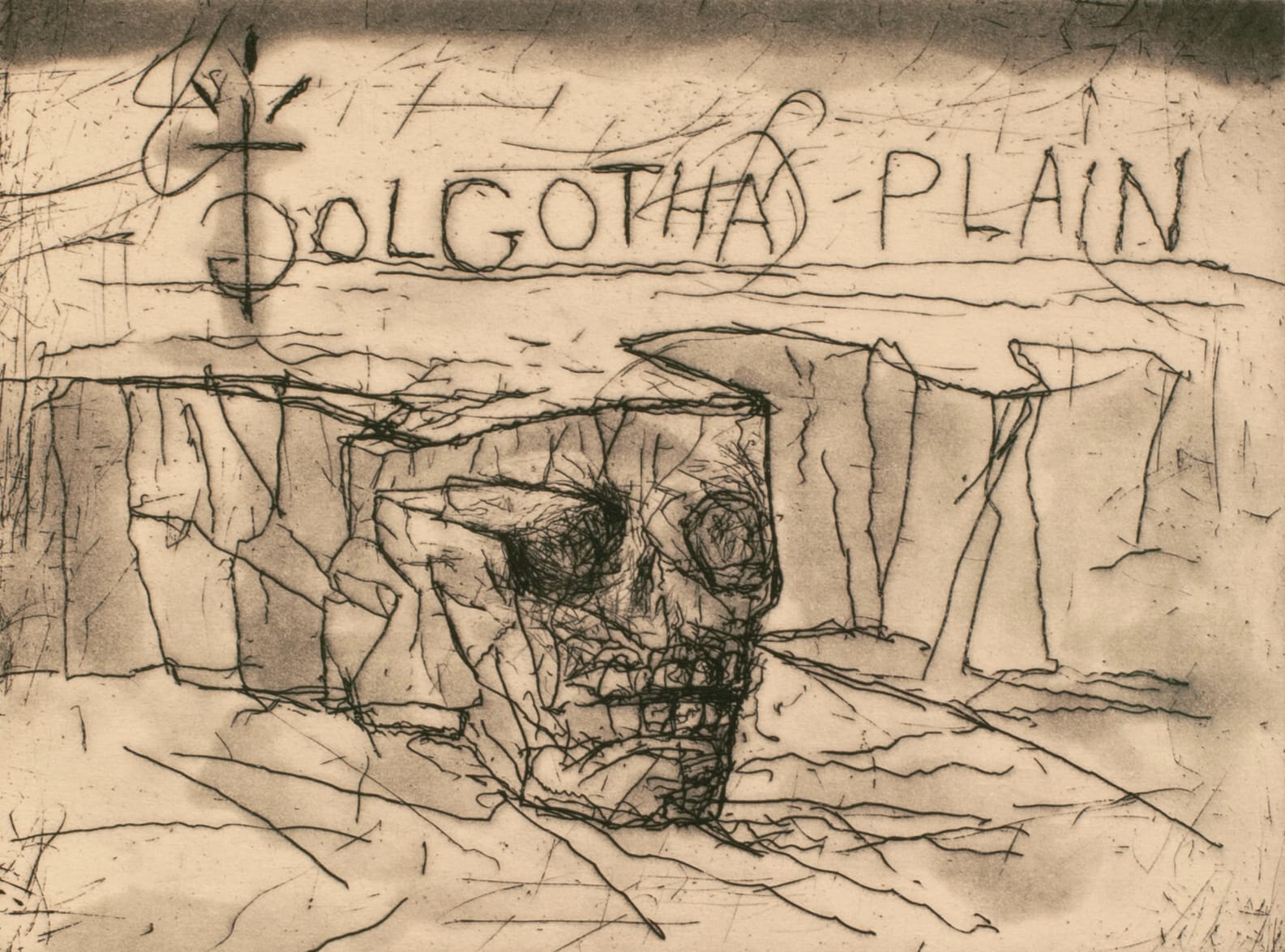
Terry Allen: Juarez: Now and Then
For almost 60 years, Terry Allen has returned again and again to mine the rich territory of his dark, Western saga Juarez. This has taken the form of drawings, installations, poems, an alt-country concept album, and a theatrical performance co-written with David Byrne, all based around a noir narrative following two couples on the run along the US-Mexico border. Juarez: Now and Then features a selection of works of paper that provide rough bookends for the project, including colorful mixed-media drawings from 1975 juxtaposed with stark black-and-white etchings made in 2022.
LA Louver (lalouver.com)
45 North Venice Boulevard, Venice, California
Through January 6, 2024
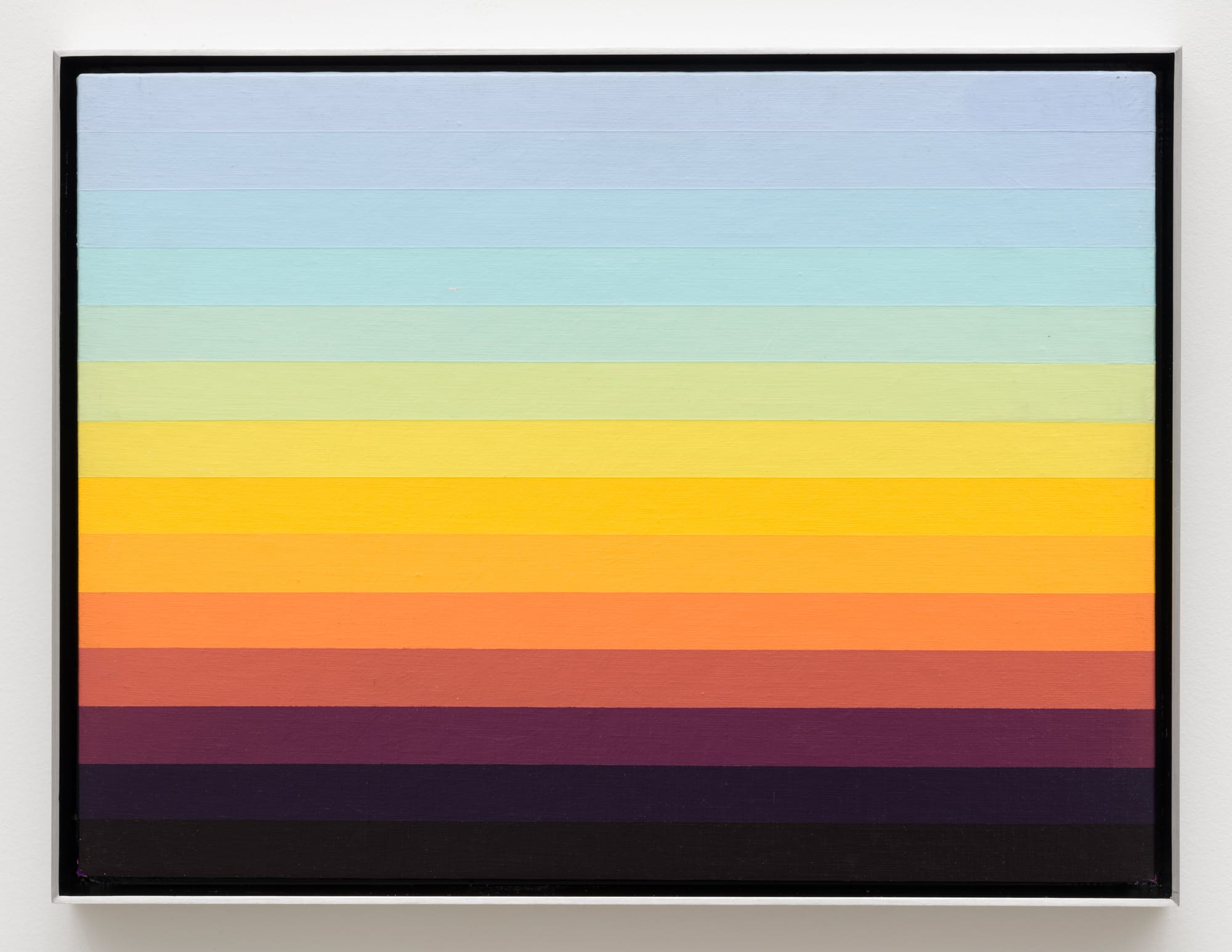
Norman Zammitt: Band Paintings 1973–1992
Like several of his peers in the Light & Space Movement, Norman Zammitt began his career experimenting with industrial materials, making transparent Plexiglas sculptures in the early 1960s. However, in 1973, he began a series of paintings that he is best known for, featuring horizontal bands of color inspired by the unique qualities of Southern California light. To create these "Band Paintings," he employed his own complex color theory and logarithmic curves, even enlisting mathematicians at the California Institute of Technology to assist him with computer-based calculations. Karma's exhibition will span 20 years, illustrating the breadth of work that resulted from Zammitt's singular vision.
Karma (karmakarma.org)
7351 Santa Monica Boulevard, West Hollywood, California
November 10–January 6, 2024
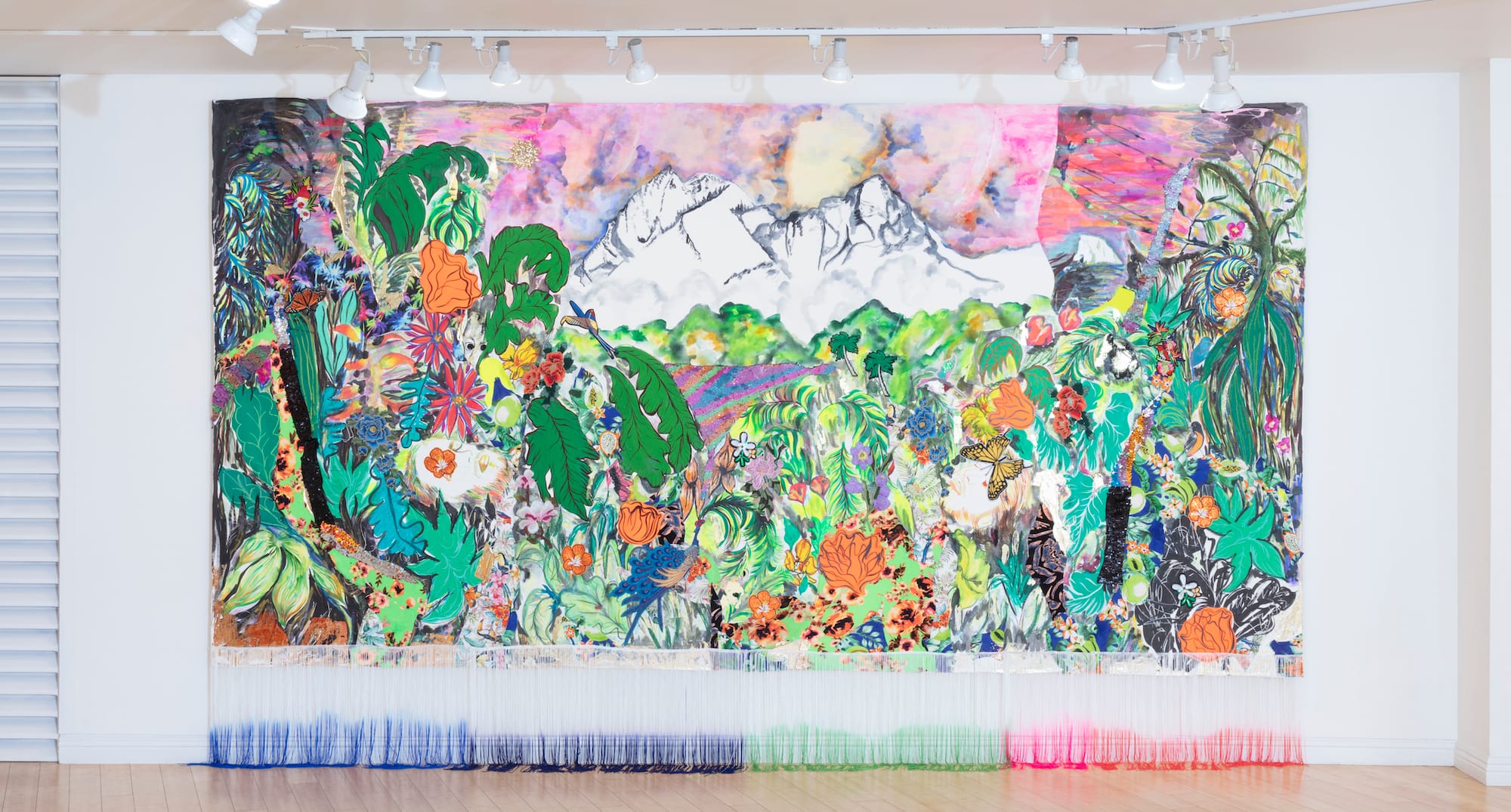
Carolyn Castaño: Cumanday - Beautiful Mountain
In her solo museum show Cumanday - Beautiful Mountain, Colombian-American artist Carolyn Castaño examines the environmental, cultural, and social impact of Andean glaciers that are melting as a result of climate change. Her multi-media approach brings together watercolor landscapes, hard-edge abstraction, printed fabrics, and sculpture, drawing connections between 19th-century exploration and colonialism and current environmental threats stemming from unchecked industrialism.
Craft Contemporary (craftcontemporary.org)
5814 Wilshire Boulevard, Miracle Mile, Los Angeles
Through January 7, 2024

Face to Face: Ken Gonzales-Day
Face to Face unites two complementary bodies of work by LA-based photographer Ken Gonzales-Day. Pandemic Portraits includes photographs of artists, dancers, writers, and other culture workers taken at the height of the pandemic, shedding light on moments of intimacy in the face of isolation. Profiled features images of sculptural busts and other works found in storage rooms of major US museums, including the Smithsonian and the National Portrait Gallery, raising critical questions about race, identity, and representation. The two series are linked by a 2022 portrait of Dr. Steven Pratt of the Osage Nation and an image of the 1904 bust of his great grandfather, Shonke Mon-thi^.
Claremont Lewis Museum of Art (clmoa.org)
200 West First Street, Claremont, California
Through January 21, 2024

Reina de Los Angeles
According to the legend, a vision of the Virgin Mary appeared to a Chichimec peasant named Juan Diego Cuauhtlatoatzin on the outskirts of Mexico City in December of 1531, ushering in the spread of Catholicism throughout present-day North and South America. The Virgen de Guadalupe, as she is known, is revered by Catholics across Latin America but also stands as a symbol of cultural pride for many Mexican Americans. Her image can be found on street murals, mosaics, and family shrines all over Los Angeles (which was originally named in her honor as "El Pueblo de Nuestra Señora la Reina de los Ángeles del Río Porciúncula"). For over a decade, photographer and librarian Nydya Mora has been documenting these public manifestations, now brought together in Reina de Los Angeles. Her images chronicle individual expressions of piety and honor that are deeply embedded in the fabric of the city.
Forest Lawn Museum (forestlawn.com)
1712 South Glendale Avenue, Glendale, California
Through February 11, 2024
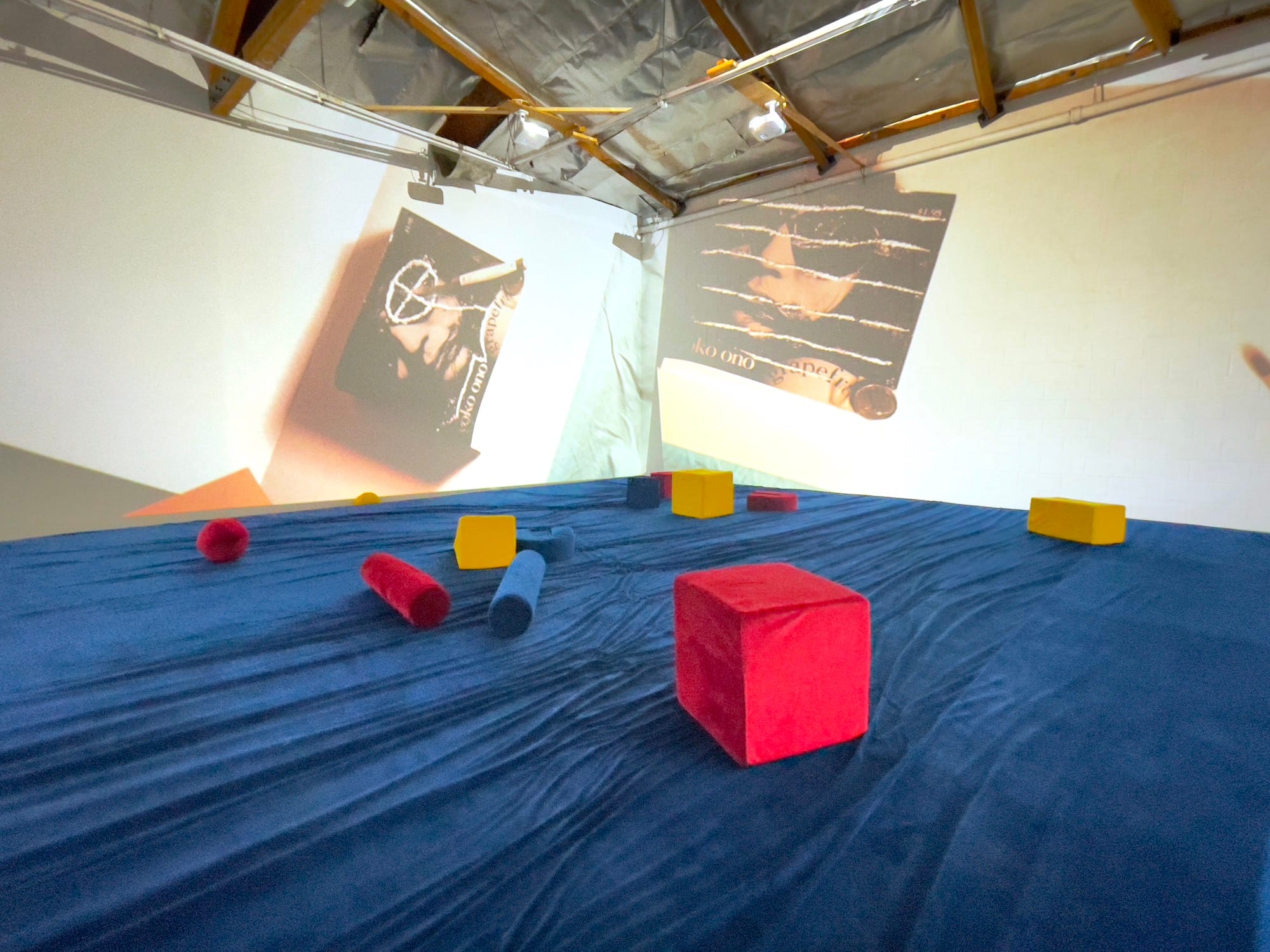
Hélio Oiticica & Neville D’Almeida: Cosmococa/CC2 Onobject
In the 1970s, Brazilian artist Hélio Oiticica and filmmaker Neville D’Almeida collaborated on a series of nine immersive artworks titled Cosmococas that incorporated sand, balloons, sound elements, and projected images. The Mistake Room has remounted a presentation of CC2/Onobject, which features a wall-to-wall foam floor, colorful foam objects, and projections from Yoko Ono’s book Grapefruit, accompanied by music from the Plastic Ono Band. As the exhibition unfolds, several Angeleno artists and performers will stage events and interventions in the space, reframing Oiticica and D’Almeida's extension of art into life within a local context.
The Mistake Room (tmr.la)
1811 East 20th Street, Central-Alameda, Los Angeles
Through March 3, 2024
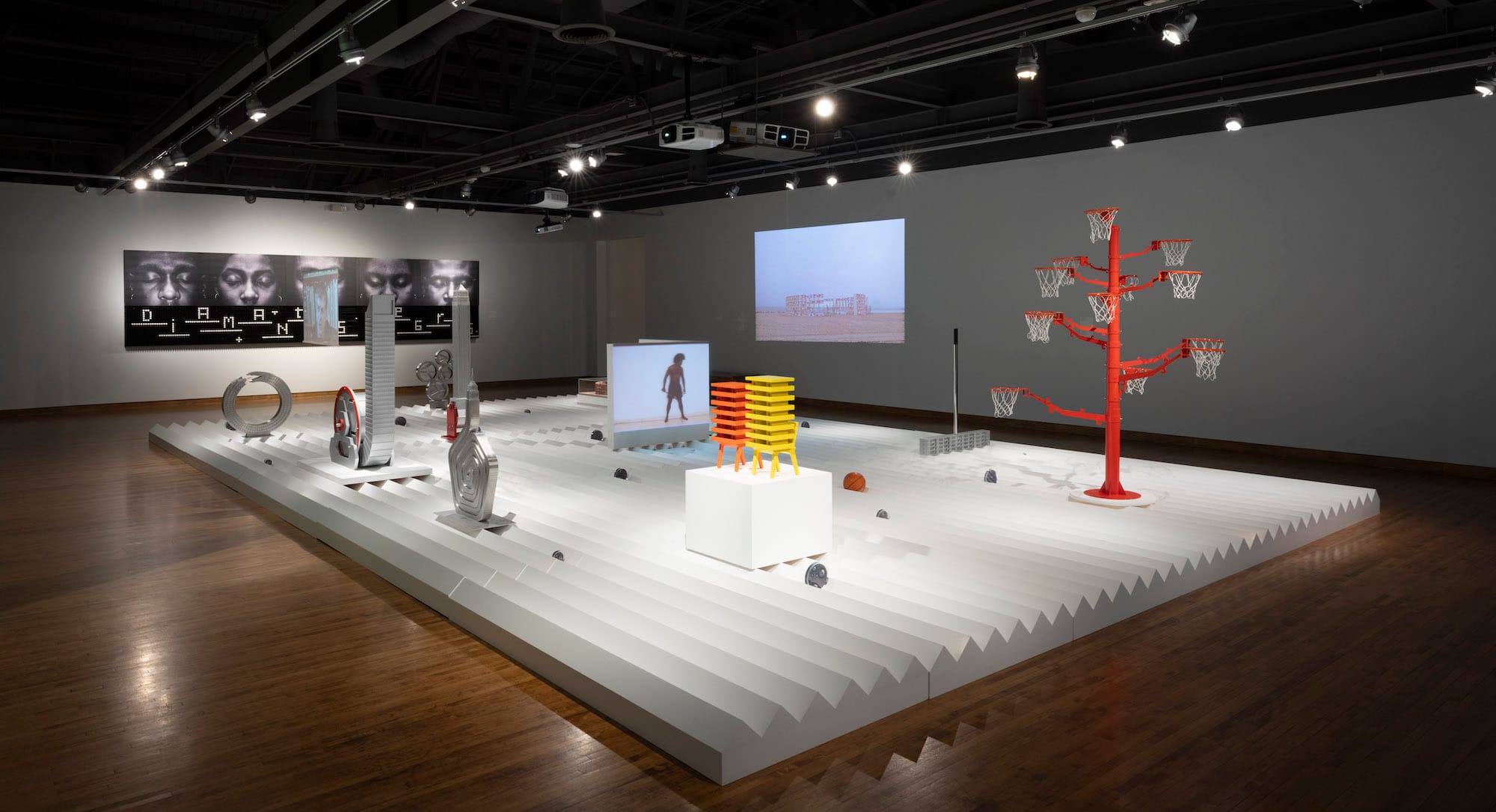
Alexandre Arrechea: Intersected Horizons
Since emerging as a founding member of the Cuban art collective Los Carpinteros almost 25 years ago, Alexandre Arrechea's work has been characterized by an embrace of hybridity and the dissolution of boundaries. This syncretism is evident in his multidisciplinary practice, which includes sculpture, painting, photography, and video art, as well as the disparate nexus of sources from which he draws inspiration. Intersected Horizons is Arrechea's first solo museum show in California, showcasing his engaging mix of conceptual curiosity and material inquiry.
Museum of Latin American Art (molaa.org)
628 Alamitos Avenue, Long Beach, California
Through May 2024
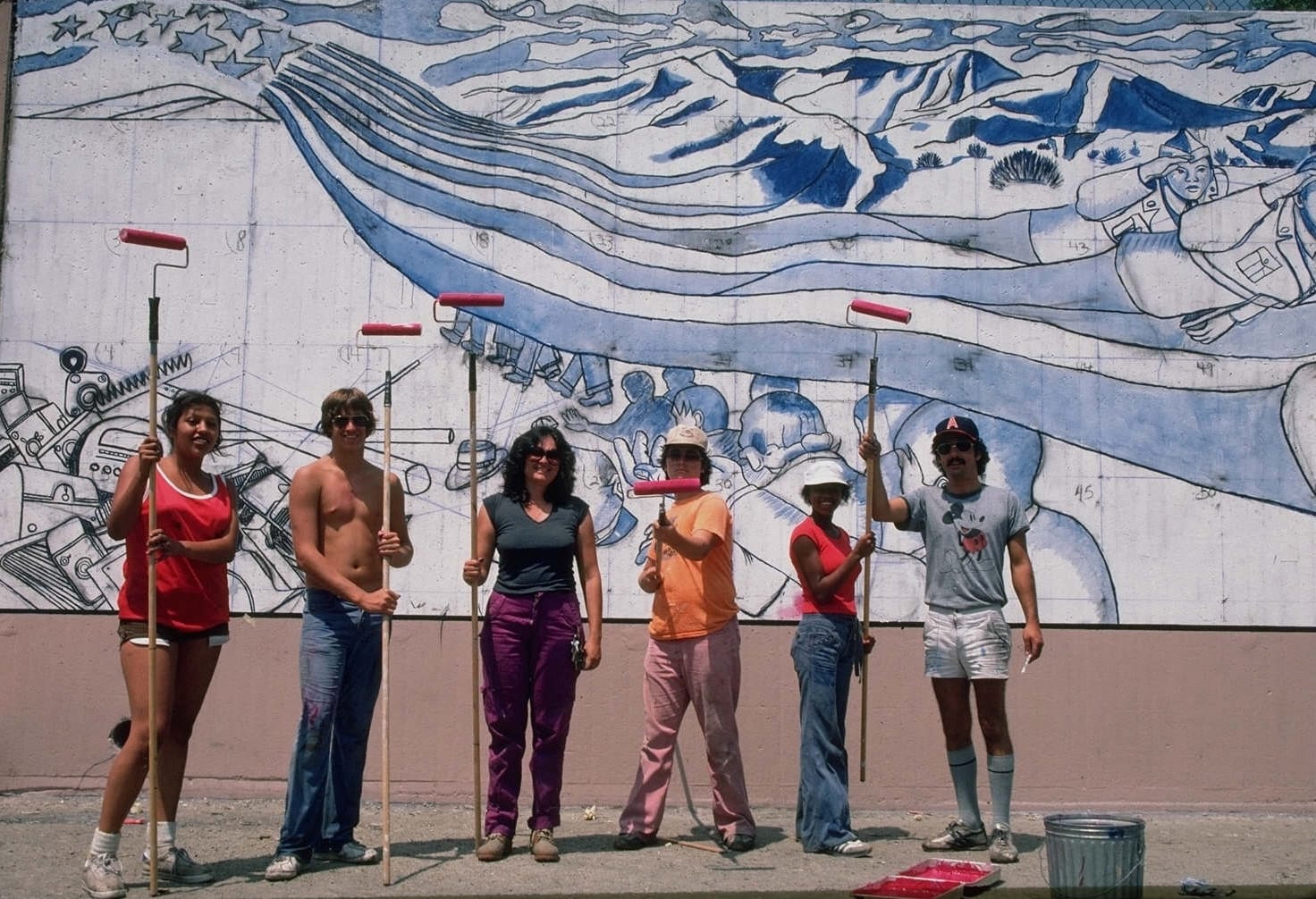
Painting in the River of Angels: Judy Baca and the Great Wall
In the mid-1970s, Judy Baca began work on "The Great Wall of Los Angeles," a 2,700-foot-long mural painted on the concrete sides of a tributary of the LA River in the San Fernando Valley. Created in collaboration with hundreds of youth from the surrounding communities, the mural depicts episodes in LA's history, told from the perspectives of women, people of color, and other marginalized groups. Now, the exhibition Painting in the River of Angels brings the mural into the Los Angeles County Museum of Art, as Baca and colleagues from the Social and Public Art Resource Center complete two new panels on site, depicting the Movement for Farmworkers' Rights, the East LA Walkout, and scenes from the Watts Rebellion and Renaissance, updating "The Great Wall" for the 21st century.
Los Angeles County Museum of Art (lacma.org)
5905 Wilshire Boulevard, Miracle Mile, Los Angeles
Through June 2, 2024

